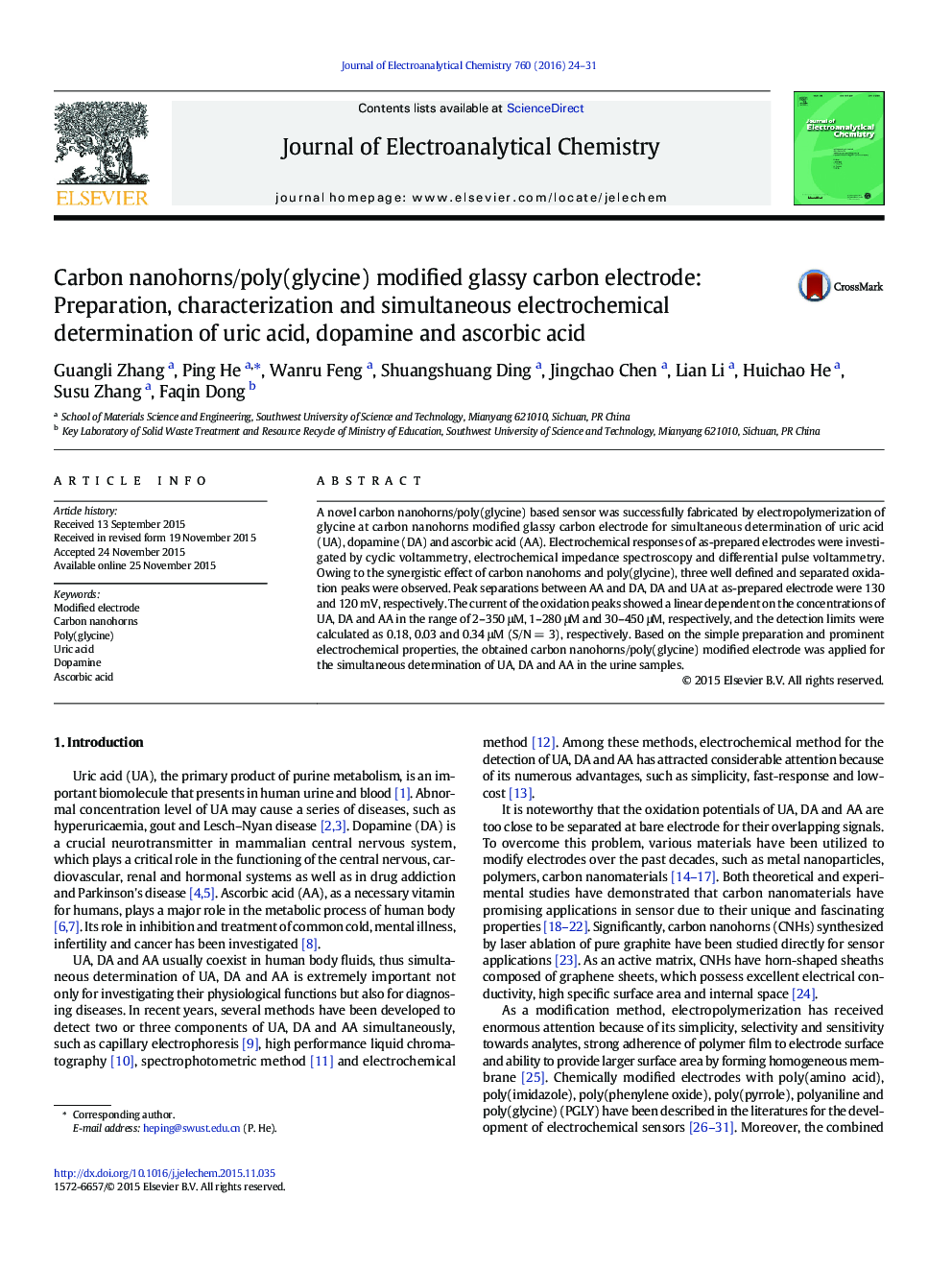| کد مقاله | کد نشریه | سال انتشار | مقاله انگلیسی | نسخه تمام متن |
|---|---|---|---|---|
| 217918 | 463174 | 2016 | 8 صفحه PDF | دانلود رایگان |
• Novel carbon nanohorns/poly(glycine) based sensor was fabricated.
• The sensor was applied for simultaneous determination of UA, DA and AA.
• Excellent electrocatalytic activity towards UA, DA and AA was achieved.
• The sensor exhibited excellent reproducibility and long-time stability.
A novel carbon nanohorns/poly(glycine) based sensor was successfully fabricated by electropolymerization of glycine at carbon nanohorns modified glassy carbon electrode for simultaneous determination of uric acid (UA), dopamine (DA) and ascorbic acid (AA). Electrochemical responses of as-prepared electrodes were investigated by cyclic voltammetry, electrochemical impedance spectroscopy and differential pulse voltammetry. Owing to the synergistic effect of carbon nanohorns and poly(glycine), three well defined and separated oxidation peaks were observed. Peak separations between AA and DA, DA and UA at as-prepared electrode were 130 and 120 mV, respectively. The current of the oxidation peaks showed a linear dependent on the concentrations of UA, DA and AA in the range of 2–350 μM, 1–280 μM and 30–450 μM, respectively, and the detection limits were calculated as 0.18, 0.03 and 0.34 μM (S/N = 3), respectively. Based on the simple preparation and prominent electrochemical properties, the obtained carbon nanohorns/poly(glycine) modified electrode was applied for the simultaneous determination of UA, DA and AA in the urine samples.
Shown in the left was TEM image of CNHs. Individual CNH structural unit was shown clearly. Typically, many CNHs structural units are restacked to form dahlia-like assemblies with diameter of about 40–80 nm. Shown in the right were DPVs of 4.0 × 10− 5 M AA, 2.0 × 10− 6 M UA and varying concentrations of DA at CNHs/PGLY/GCE in 0.10 M PBS. The currents of the oxidation peak were linearly dependent on the concentrations of DA in the range of 1–280 μM, and the detection limit was 0.03 μM (S/N = 3).Figure optionsDownload as PowerPoint slide
Journal: Journal of Electroanalytical Chemistry - Volume 760, 1 January 2016, Pages 24–31
